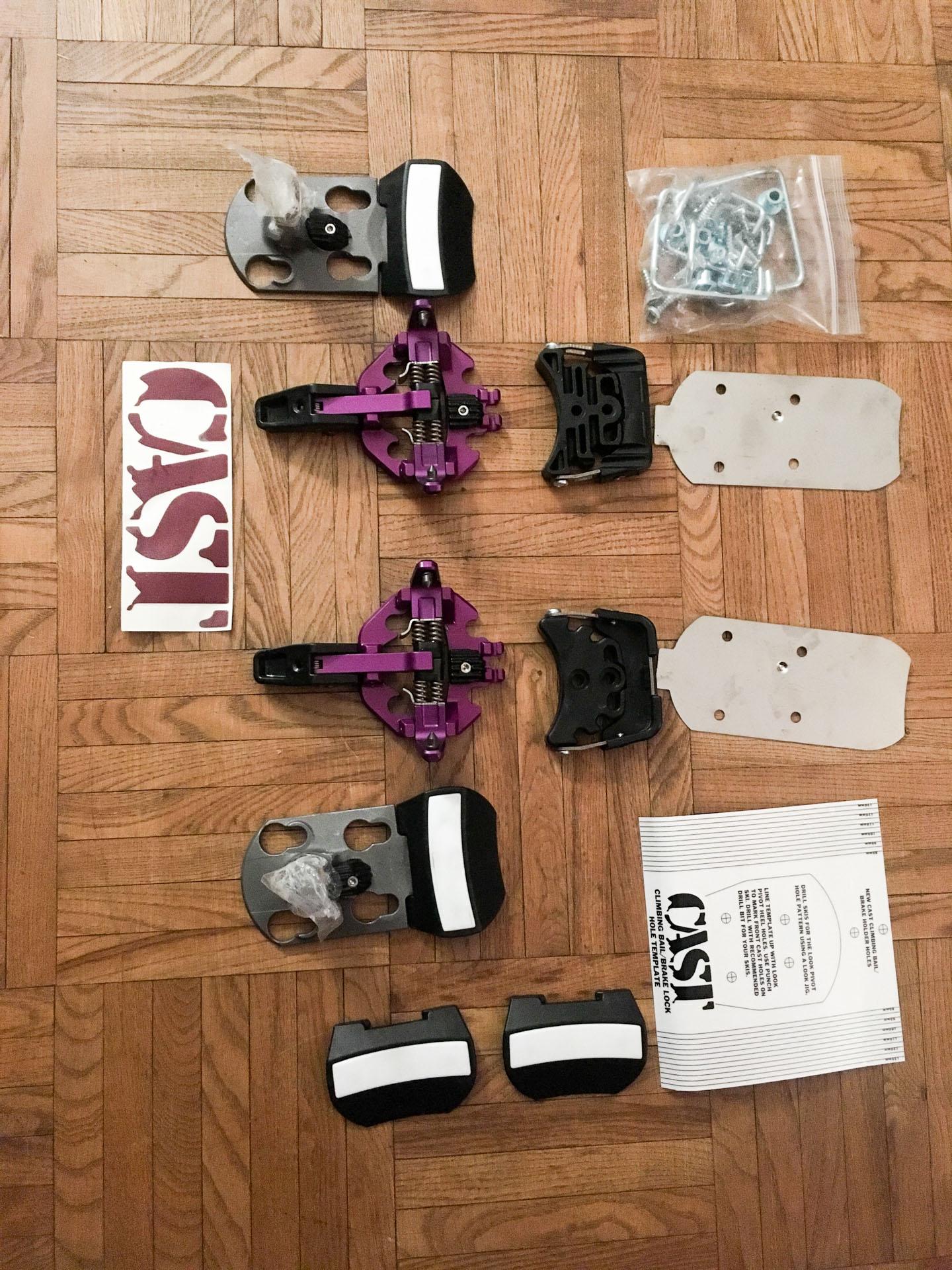Fazit Basti
Das System ist für mich eine tolle Lösung. Das Allerbeste ist das Gefühl, wenn man nach einem Aufstieg an einem Tourenberg - wenn alle anderen sehr sorgfältig und vorsichtig in Ihre Pinbindungen steigen und über den Acker zum Einstieg zu einem schönen Couloir eiern - ein sattes Klack der P18 hört und sich bei der Abfahrt auf die Alpinperformance verlassen kann.
Es braucht, um diese Performance nutzen zu können, sinnvollerweise sportliche Skischuhe mit Inserts. Viele Hersteller bieten mittlerweile solche Skischuhe an. CAST selbst bietet zusätzlich einen Umbau auf Pin-Inserts für eingeschickte Alpinskischuhe an.
Das Mehrgewicht des Systems fällt bei den oben beschriebenen Einsätzen nicht negativ auf. Es ist ein Freiheitsgewinn für das aktuelle Freerideequipment. Für aufstiegsintensive Touren oder mehrtägige Hüttentouren ist nach wie vor ein gewichtsreduziertes Setup zu empfehlen.
Das CAST- Freetour System ist eine Heavy Duty Variante einer Pin-Bindungen und ist in seiner Art für uns aktuell noch konkurrenzlos. Mitstreiterprodukte wie die Dynafit Beast oder die Salomon Shift gehen Kompromisse ein. Andere Neuerscheinungen wie die B.A.M. Pindung müssen sich erst noch beweisen.
Fazit Tobi
Für mich ist das CAST- Freetour System das ideale Setup auf meinem breiten Skigebietsski - ein Setup rein mit Alpinbindung wird damit überflüssig. Früher habe ich eine Kingpin für kurze Touren oder Zustiege zu Backcountry Kickern benutzt, wollte aber eigentlich im Skigebiet nicht nur mit der Kingpin unterwegs sein und hatte daher noch einen zweiten Ski mit Alpinbindung. Während die Kingpin in weichen Schneeverhältnissen einwandfrei funktionierte, hatte ich immer mal wieder Probleme auf hartem Untergrund und vor allem in den oft harten und unebenen Anfahrten von Backcountry-Kickern.
Mit dem CAST System hat sich das nun erübrigt. Die Kingpin ist nun auf einem weiteren Ski, der nur zum ausgiebigeren Touren gedacht ist, montiert. Daraus ergibt sich für mich ein Riesenvorteil: Ich habe ein kompromissloses Setup mit CAST, das mich vor allem abfahrtstechnisch nicht einschränkt und sobald ich Felle/Vorderbacken im Rucksack habe, ist an einem Skitag quasi alles möglich. Zusätzlich habe ich noch ein weiteres Setup für aufstiegslastigere Unternehmungen wie Hüttentouren, aber auch für Tage mit vielen kurzen Aufstiegen und mehrfachem An- und Abfellen. Hier ist der Komfort der Kingpins und Shifts besser, da man schneller Umgebaut hat. Seit der Vorstellung des Ur-CAST Systems vor ein paar Jahren war ich als FKS/Pivot Fan an dem System sehr interessiert. Als ich es diesen Winter im Februar endlich erhalten habe, war das für mich gefühlt wie ein zweites Weihnachten und das Gefühl hält nach wie vor an - vor allem wenn ich nach dem Hochfellen auf einmal mit einem top Alpin-Setup da stehe.
Vor- & Nachteile
+ Zuverlässiges, robustes System
+ Beste Abfahrtsperformance
+ Unterschiedliche Sohlenwahl (ISO und WTR, GripWalk mittlerweile ebenfalls erhältlich)
+ 2nd Skiset erhältlich, um mehrere Ski mit den Grundplatten auszurüsten. (In Kombination mit in den Ski montierten Inserts an den Hinterbacken erreicht man damit eine demontierbare Bindung, welche auf mehreren Ski verwendet werden kann)
+ Aufnahme von handelsüblichen Harscheisen
+ 2-fache Steighilfe und komplett flache Einstellung
+ Montage daheim möglich (etwas Geschickt ist notwendig)
+ Bohrmuster der P18
- Gesamtgewicht gegenüber anderen Tourenbindungen und ungewohnte Gewichtsverteilung durch den Hinterbacken im Aufstieg
- Skischuhe mit Inserts notwendig
- Die losen Bindungsvorderbacken können theoretisch verloren oder vergessen werden
- Zusätzliche Anschaffungskosten zur Alpinbindung
- 2 zusätzliche Bohrlöcher
Details
Preis ganzes System: 675$ (mit P18)
Preis ohne P18: 345$
2nd Ski set: 100$
Ersatzteile auch einzeln erhältlich.
Gewicht (laut Website): 2000 Gramm "Tourengewicht" pro Paar (ohne die P18 Vorderbacken, welche ja im Rucksack sind)
Hier geht es zur Website von CAST mit weiteren Informationen.
PowderGuide wurden vom Hersteller 2 Kits Kostenfrei zur Verfügung gestellt. Wie wir testen erfahrt ihr in unserem Test-Statement.


























